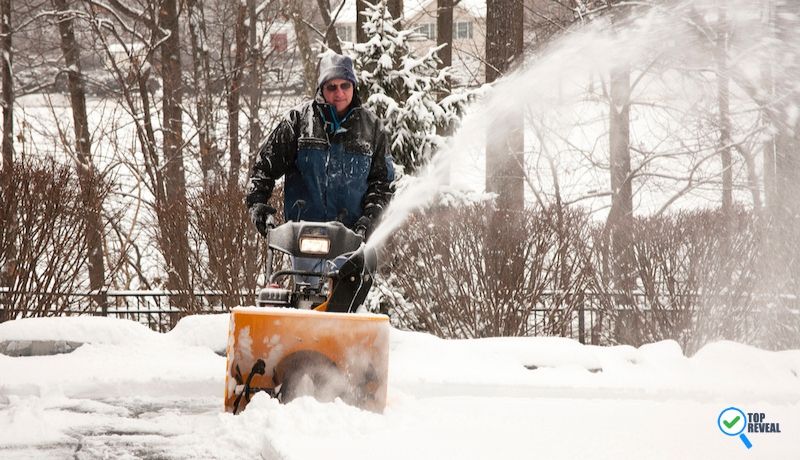A snowblower can save you many hours of work throughout the course of a punishing warranty. In terms of pure time management, they more than justify their cost. However, knowing you want a snowblower is not enough. you also need to know how to select the right one for your needs.

It is exactly for this purpose that we gather today. The objective of this guide is not to sell you on a specific product, but rather to equip you with the tools you need to choose your own snowblower. So, without further ado, let’s get to it. Read on for a guide on how to choose a snowblower.
First, where do you live?
Weird question, we know, but your location can actually have a major impact on the type of equipment you can buy. In certain places, some tools are completely outlawed. The state of California is a good example of a place that makes the process of choosing a snowblower a little bit complicated.
It’s all about emission output. If you are looking at a high emission tool, chances are pretty good that it won’t be legal in California. The purpose of these restrictions is to protect the environment but it can complicate the shopping process. This is especially true when you remember that most powerful snow blowers do produce plenty of emissions.
Fortunately, when a product is outlawed in a particular location that information is usually prominently displayed on the packaging.
Size
The size of your snowblower may impact how quickly it is able to operate. Generally speaking, the bigger the tool, the larger its range. And the larger its range, the quicker it operates. This does not, however, mean that you need to go out and look for the biggest piece of equipment you can find.
Ideally, you will find something that provides the optimal combination of portability, range, and ease of storage. As with most things, the balance will be found in moderation.
Style of Tool
The style of the tool can also have a big impact on your user experience. Some snow blowers are basically no different than leafblowers while others can be heavy-duty pieces of equipment that almost resemble a lawnmower in appearance.
Which you opt for will depend mostly on your needs. If you live in an area that tends to get a ton of snow every year, it will be well worth your money to invest in a heavy-duty piece of equipment. However, if you don’t tend to get much snowfall you can certainly make do with a smaller piece of equipment.
Start
It is also important to consider how easy a piece of equipment will be to start. Trivial, right? Not quite. When the weather starts to get cold, equipment often struggles to adapt to the new temperatures. This is true of your car and it can also be true of your snowblower.
To counterbalance this, many units will include a quick start component. This usually takes the form of a small button with an electric firing mechanism that (at least in theory) activates your motor in mere seconds.
The alternative is to have a recoil string powered snowblower. These start much the same way as an old fashioned lawnmower. Even in the best of circumstances, they can be fairly hard to activate but this is especially true when the weather is bitterly cold. Quick start buttons tend to be found on pricier units but they certainly help you to avoid major headaches.
Lights
A regrettable amount of the time, snow blowing happens in the dark. Often enough, winter storms will happen while you sleep. Then, the next morning, you are left digging yourself out of your driveway just to get to work. It is a tale as old as time but also one that can be made simpler by certain snowblower features.
For example, some units will feature LED lights that make it much easier to navigate around with in the dark. This feature will not ultimately make or break your experience but it can simplify the snow blowing process at least a little bit.
Speed Settings
Many snowblowers will also include a range of speed settings through which you can customize your experience. For heavier snows, you may need to give it everything you’ve got, while other situations may be better served by a “less is more” approach.
Speed settings are another factor that can add to the cost of a snowblower but it is a nice feature to have all the same.
The Right Snowblower Might Look a Little Like This
You don’t necessarily need all of the features discussed above, but you should look for a product that includes the right range of features for your needs. This Cub Cadet is a good example of a snowblower that embodies much of what has been discussed to this point.
It features a variable speed motor, a high maneuverability factor, LED lights, and an extremely impressive throw range of thirty feet. Of course, you certainly don’t have to choose this exact product, but the right unit for your needs may look a lot like the Cub Cadet.
Conclusion
Hopefully, the guidelines listed above have made your buying process easier. In this review, our goal has been to help you figure out how to choose a snowblower. As you can see a lot goes into the purchase. While the various factors may make the process seem overwhelming the fact of the matter is that the selection process can be very intuitive.
When it doubt, start by inventorying your needs. The right piece of equipment will be able to address all or at least most of your concerns. In any case, you at least shouldn’t have to wonder how to choose a snowblower anymore. If you follow the guidelines above the process should be very easy.
